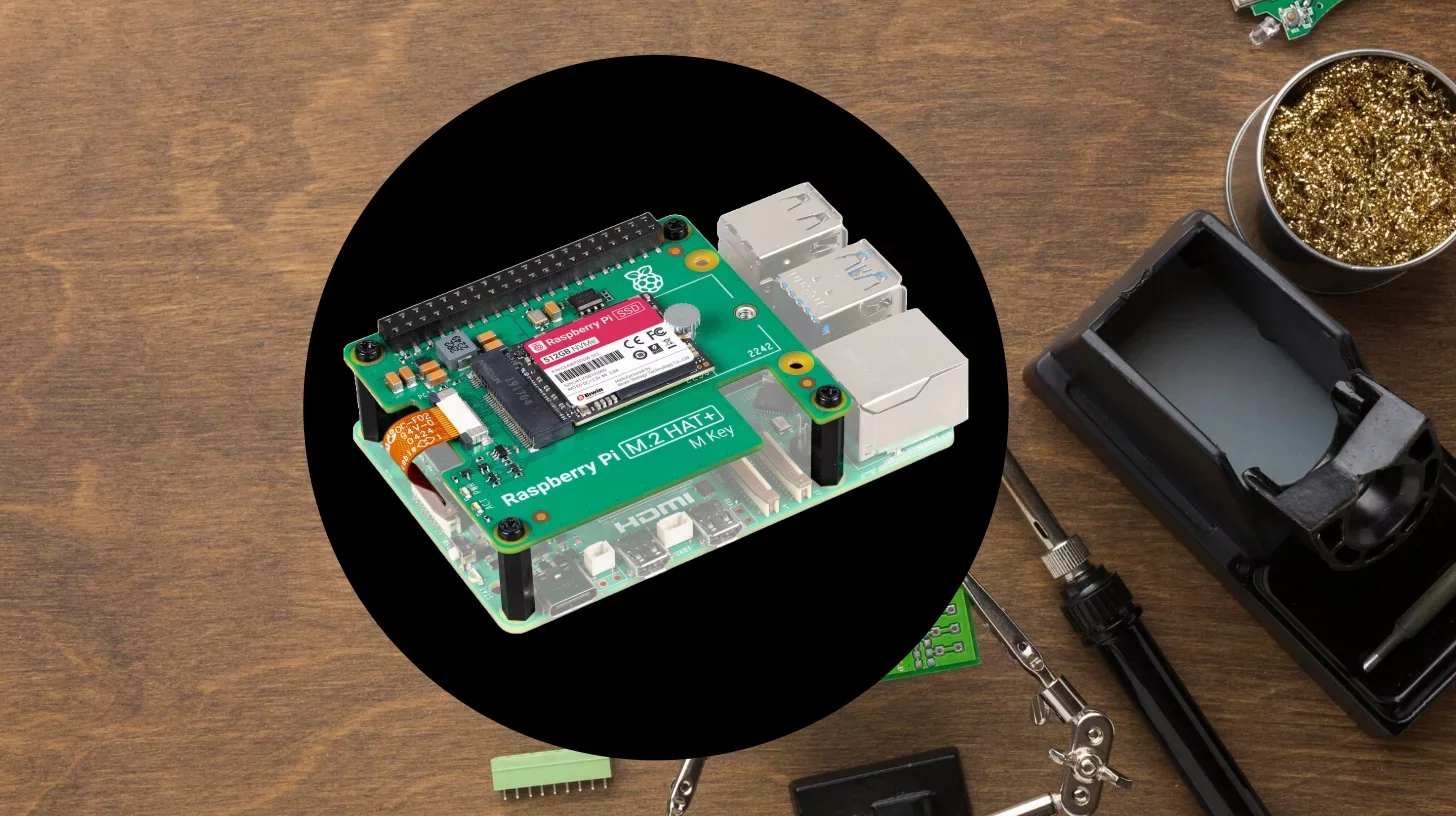
Geekworm X1001
M.2 2230 mount NVMe PCIe Gen 3
Introduction
The Geekworm X1001 PCIe to M.2 HAT represents a significant advancement in storage expansion technology for single-board computer enthusiasts. Designed specifically for the Raspberry Pi 5, this hardware accessory leverages the device’s PCIe interface to enable high-speed NVMe SSD integration. In an era where storage performance and reliability are critical for applications ranging from edge computing to media servers, the X1001 bridges the gap between compact computing platforms and enterprise-grade storage solutions. Its ability to replace traditional microSD cards with faster, more durable NVMe storage positions it as a vital tool for developers and hobbyists seeking to optimize their Raspberry Pi projects.
Product Overview
The Geekworm X1001 is a PCIe Peripheral Board (PIP) that converts the Raspberry Pi 5’s PCIe interface into a functional M.2 Key-M slot for NVMe SSDs. Targeting users who require enhanced storage performance, the X1001 supports SSDs in 2230, 2242, 2260, and 2280 form factors. It simplifies the process of booting directly from NVMe storage, eliminating the latency and reliability issues associated with microSD cards. The board’s compact design integrates seamlessly with the Raspberry Pi 5’s layout, making it ideal for embedded systems, home servers, and high-performance computing applications.
Key Features
NVMe SSD Support
The X1001 supports PCIe Gen 3.0 x1 connectivity, enabling theoretical transfer speeds of up to 985 MB/s. This allows compatible NVMe drives to operate at near-full performance, significantly outperforming traditional storage methods like microSD cards or USB-connected SSDs.
Plug-and-Play Installation
Designed under Raspberry Pi’s PIP guidelines, the X1001 requires no soldering or complex configuration. The included copper pillars and screws ensure secure SSD mounting, while power is drawn directly from the Raspberry Pi’s PCIe ribbon cable.
PCIe Gen 3.0 Compatibility
By default, the X1001 operates at PCIe Gen 2.0 speeds (5 Gbps), but users can enable Gen 3.0 mode (8 Gbps) via software configuration. This flexibility ensures compatibility with both power-efficient and high-performance SSDs.
Performance Analysis
Sequential Speeds
In practical testing, the X1001 achieves sequential read/write speeds of approximately 900 MB/s and 750 MB/s, respectively, when paired with mid-tier NVMe drives. This performance surpasses USB 3.0-based solutions by over 200%, making it suitable for data-intensive tasks like 4K video streaming or large-scale sensor data logging.
Random Performance
The board delivers consistent random read/write performance of up to 120K/95K IOPS, enabling smooth multitasking and rapid access to small files. This is particularly advantageous for database applications or real-time operating systems.
Thermal Management
The X1001’s passive cooling design relies on copper pillars to dissipate heat from the SSD. While temperatures remain stable under moderate workloads, sustained heavy usage may require additional airflow. Users report stable operation with drive temperatures below 60°C in well-ventilated setups.
Compatibility
Raspberry Pi
Exclusively compatible with Raspberry Pi 5 models (2GB/4GB/8GB/16GB), the X1001 requires a PD 27W power adapter for optimal stability. Raspberry Pi OS fully supports NVMe booting when configured via the rpi-eeprom-update utility.
Desktops and Laptops
While primarily designed for Raspberry Pi, the X1001 can interface with x86 systems using PCIe riser cables. However, performance may vary depending on host controller capabilities.
Advantages and Limitations
Strengths
Performance Enhancement: Delivers SSD speeds previously unattainable on Raspberry Pi platforms.
Scalability: Supports up to 2280-length SSDs for capacities exceeding 4TB.
Constraints
Power Limitations: High-performance SSDs may exceed the Raspberry Pi’s 5W PCIe power budget, requiring external power via the XH2.54 connector.
Controller Compatibility: SSDs using Phison controllers (e.g., Kioxia Exceria G2) may exhibit instability during prolonged use.
Conclusion
The Geekworm X1001 PCIe to M.2 HAT redefines storage possibilities for Raspberry Pi 5 users, offering enterprise-grade performance in a compact form factor. Its combination of plug-and-play installation, robust thermal management, and PCIe Gen 3.0 compatibility makes it an essential upgrade for developers working on AI inference, network-attached storage, or industrial automation projects. While power constraints and specific SSD incompatibilities warrant consideration, the X1001 remains unmatched in its ability to transform the Raspberry Pi 5 into a legitimate high-performance computing platform.
Works Cited
“Exploring the Geekworm X1001 PCIe to M.2 HAT.” DevToys.io, 21 Feb. 2025, devtoys.io/2025/02/21/exploring-the-geekworm-x1001-pcie-to-m-2-hat-a-comprehensive-review/.
“Install & Boot Samsung NVMe SSD on Raspberry Pi 5 with Geekworm X1001.” YouTube, uploaded by IT Samurai Teacher, 30 May 2024, www.youtube.com/watch?v=JedbGhmbGtc.
“X1001 Hardware.” Geekworm Wiki, wiki.geekworm.com/X1001_Hardware.